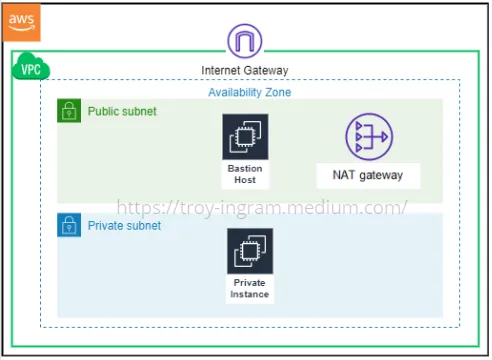Ethereum is far more than a simple digital coin. It's a global, decentralized computer where developers build applications that run without any single person or company in control. This "programmable blockchain" enables things like smart contracts - automated agreements that enforce themselves - and decentralized apps, also called DApps, that power finance, collectibles, gaming, and more. And it all happens securely across thousands of computers working together. Think of Ethereum like the internet's app store - but it runs itself, with no central boss. For those looking to get started, you can make a secure ETH purchase at Changelly and own Ethereum in minutes.
Why Ethereum Matters Today: Key Upgrades Driving Utility & Adoption
Ethereum matters today because it's actively becoming faster, cheaper, and more practical. The Pectra upgrade in mid‑2025 made transactions smoother and wallets easier to use, while letting validators stake up to 2,048 ETH instead of just 32; this change brings flexibility and lowers barriers for larger participants. And the earlier Dencun upgrade introduced proto‑danksharding, delivering "blobs" - temporary data packages that cut costs for layer‑2 networks and make the whole system leaner and more efficient. Or you can think of rollups using blobs like a food delivery service bundling snacks - faster and cheaper. These upgrades aren't theoretical. Websites, apps, and wallets built on Ethereum already work better. That clarity and momentum help Ethereum stand out as more than just another crypto coin.
How Smart Contracts & Composability Spark Innovation
Smart contracts are powerful building blocks that can connect and work together. And that combination is called composability. It means developers can mix smart contracts - like money markets, token swaps, or game functions - to create brand-new apps. Or think of it like Lego pieces: you snap blocks together and build something complex from simple parts. That's why DeFi protocols on Ethereum often call this "money Legos." You don't need to rebuild an exchange just to offer token swaps. You just reuse existing contracts. This speeds innovation and cuts costs. And everyone can join - there's no gatekeeper. The open, modular design means anyone can plug in and build. That composability powers NFTs, DAO tools, financial apps, and more - and it's a hallmark of why Ethereum shines.
Beyond Speculation: Real-World Ethereum Use Cases in Business & Public Sector
Ethereum powers real-world applications in business and government - not just crypto. Governments use it for secure record‑keeping, identity systems, and even e‑voting, offering transparency and lower administrative hassle. But it doesn't stop there. Companies streamline supply chains by using Ethereum to track goods, cut fraud, and ensure every transaction is visible and trusted.
Or take asset tokenization: Ethereum's smart contracts let real estate, art, and private equity become digital tokens. That opens up fractional ownership, smoother trading, and global access to illiquid assets. And institutions are joining in - BlackRock created an Ethereum‑based tokenized money‑market fund where qualified investors get interest‑bearing stable tokens.
And banks or healthcare groups can use private Ethereum setups to safely share data, manage identities, and simplify compliance - all while staying private and secure. Ethereum is already proving its worth beyond just a speculative digital asset.
UX Revolution on Ethereum: Account Abstraction, Smart Wallets & Mainstream Onboarding
Smart wallets simplify using Ethereum by removing complex blockchain hurdles. And account abstraction - a new wallet design - lets you recover your account with trusted contacts instead of just a seed phrase. It also supports "gasless" onboarding, where apps - not you - handle transaction fees in tokens you already use. Or imagine logging in just like Web2 apps - but powered by blockchain. These wallets can batch actions - like multiple trades - into one smooth step. That cuts frustration and confusion. And they support familiar login flows, so new users don't need to fuss with private keys or ETH gas. Account abstraction brings usability that feels as simple as traditional apps. It opens the door for more people to interact with Ethereum safely and easily.
The Economics & Governance of Ethereum: Why ETH Is More Than a Price Cycle
Ethereum's economy runs on more than hype. ETH underpins network fees, validator rewards, and its supply dynamics. Validators stake 32 ETH or more to secure the network. They earn new ETH and fees for validating blocks. And if they misbehave, they can lose some of their stake.
Gas fees, still paid in ETH, get burned - this actually reduces supply. Over time, that brings deflationary pressure when network activity is high.
Or think of Ethereum's economics like a balancing act: fees fund security, staking locks ETH in place, and the burn mechanism strengthens ETH's value. Governance isn't chaotic either. Protocol changes like EIP-1559 or upgrades such as Dencun and Pectra go through a transparent proposal and feedback system. That means changes reflect community consensus - not just the loudest voices.
And that blend of economic design and governance makes ETH far more than just a price ticker. It's a self-reinforcing system that aligns incentives for builders, investors, and users in the long run.
Ethereum Today vs Myth: Top Misconceptions Debunked
Some myths make Ethereum seem confusing or risky - but most are outdated or simply inaccurate.
Many people still believe Ethereum uses loads of energy. But after The Merge in September 2022, it switched from Proof-of-Work to Proof-of-Stake, slashing energy use by over 99%. That makes it much greener than it was before.
Others expect gas fees to vanish after upgrades like The Merge. That's not true. The Merge changed how blocks are secured - it didn't make transaction costs drop. Gas fees only get cheaper when scaling upgrades like sharding or rollups come into play.
Or some think Ethereum isn't decentralized anymore. Reality: it remains widely distributed across thousands of nodes and validators globally. That keeps its security and decentralization strong - just as decentralized, but leaner and more efficient.
These myths persist because complex upgrades and tech terms can be hard to follow. But knowing the facts helps beginners see Ethereum for what it truly is: evolving, practical, and far more than just "crypto."
Final Words
Ethereum isn't just another cryptocurrency - it's a living, evolving platform reshaping how digital systems work. From secure financial apps to global identity tools, it offers real utility today, not just promises for tomorrow. And with each upgrade, it becomes faster, cheaper, and easier to use, opening the door for more people and businesses to join. Its economy, governance, and developer ecosystem keep it resilient and adaptable. Myths fade when you see how much is already being built and used in the real world. Whether you're a builder, investor, or curious newcomer, Ethereum stands as proof that blockchain can power far more than speculation - it can power the future.

